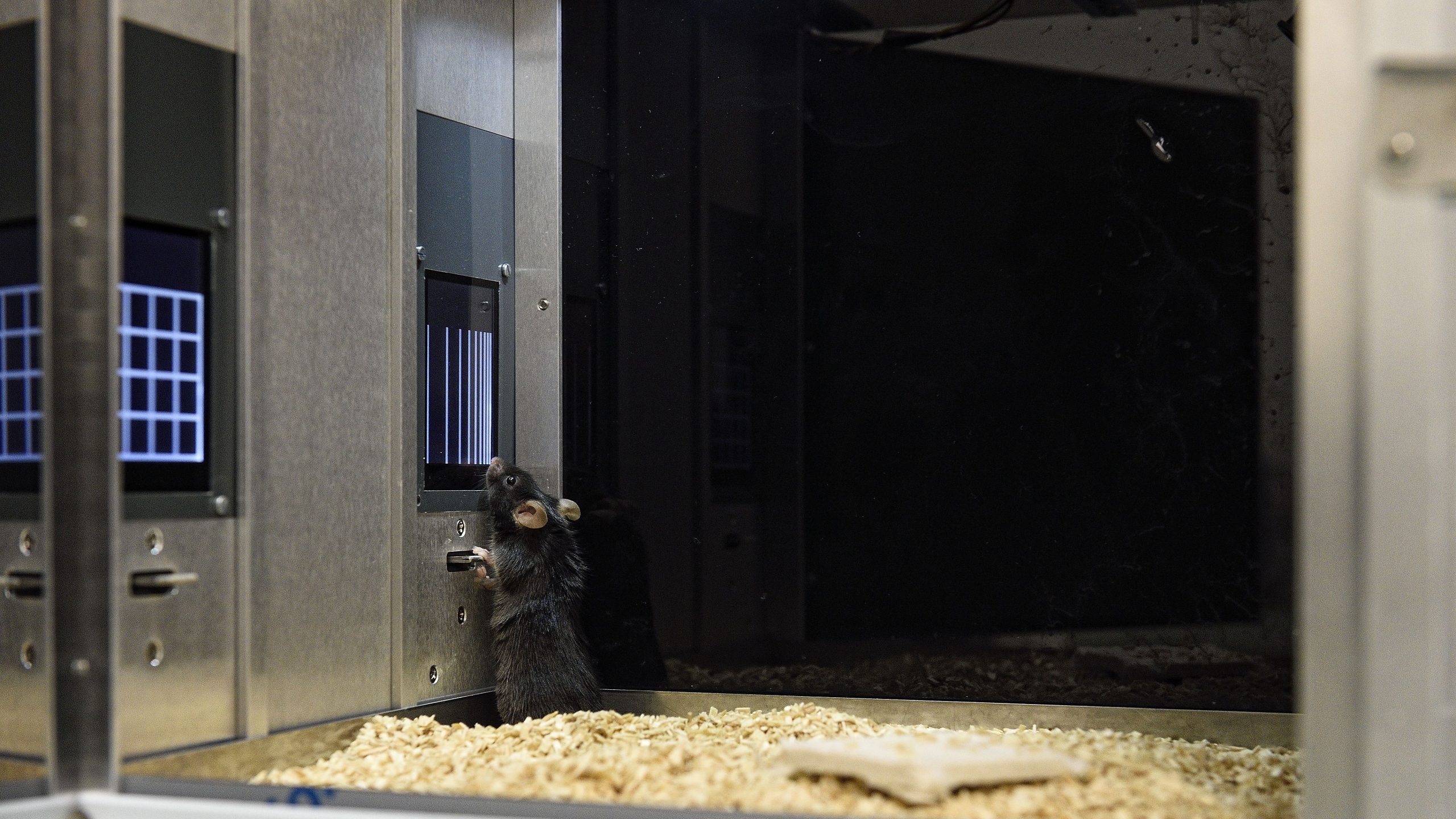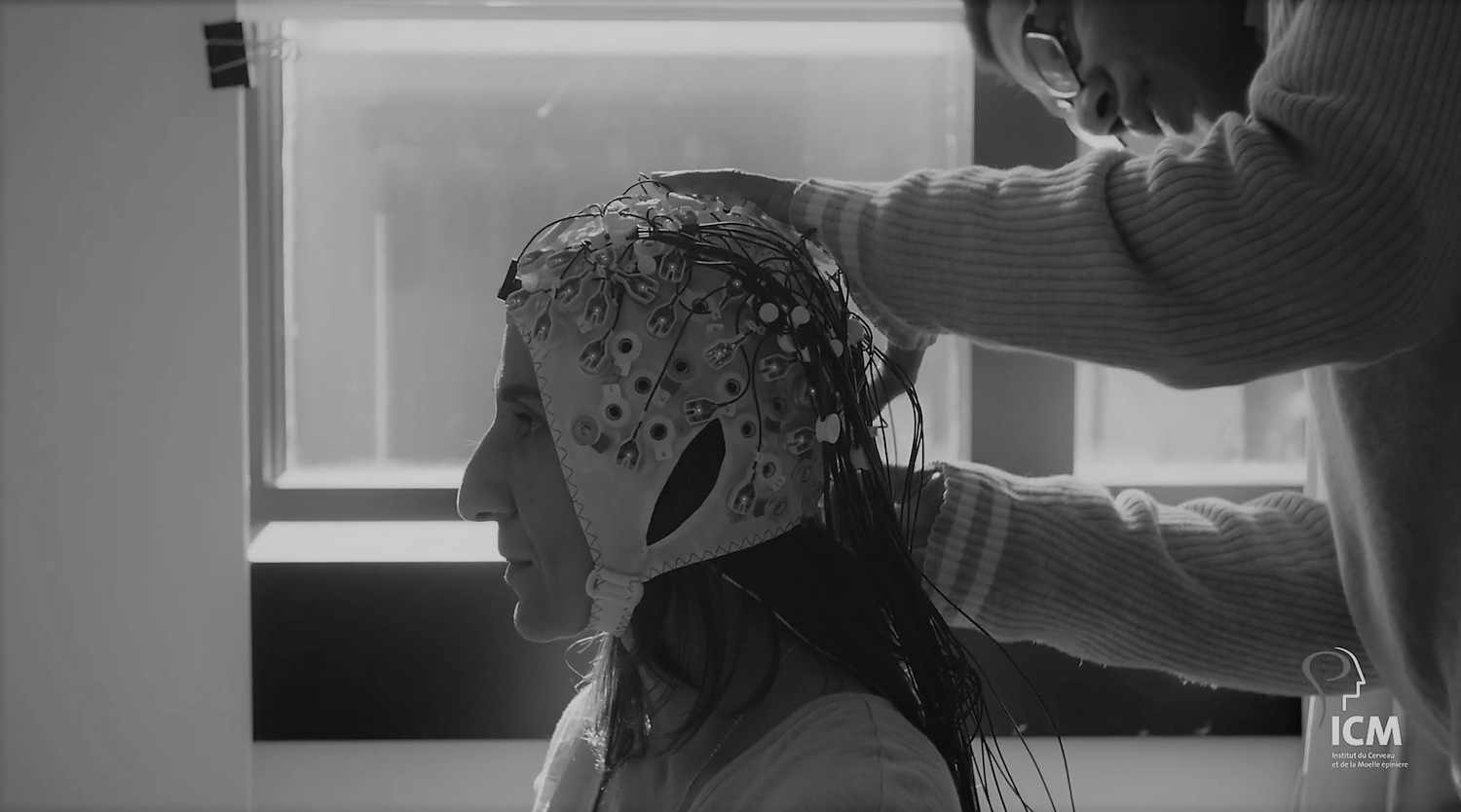I have been trained as a neurophysiologist specialized in behavior, neuronal recording and optogenetic approaches with rodent models. I studied mouse models of disorders of motor and cognitive functions. Importantly, I became an expert in pathophysiology of repetitive behaviors, notably with some recent work on compulsive behaviors of a mouse model of OCD-spectrum disorder (Burguière et al., Science 2013). Recently, I developed with my research group some innovative approaches that we can modulate specific brain activities in a closed-loop design, either at rest or within a task. We developed innovative operant chambers where mice are performing complex cognitive tasks while their social, circadian and cognitive behaviours are monitored automatically and continuously using multiple sensors. (CLICK HERE to continue reading)
Welcome!
Exciting announcement!
Our Lab is Moving to the CRNL in 2025!
We are thrilled to announce that in 2025, our lab will be joining the Centre de Recherche en Neurosciences de Lyon (CRNL), a leading institute dedicated to advancing our understanding of the central nervous system, cognitive functions, and brain disorders. We are excited for this new chapter and the possibilities ahead: stay tuned for more updates! 🔬✨
Our research focus is on the Acquisition and Regulation of Repetitive Behaviors. More specifically, our team study the behavioral and neurophysiological dynamics underlying the automatization of motivated behaviors and its contextual adaptation. We are especially interested in studying how cortico-basal ganglia loops underlie these processes. We aim to probe these neural circuits by using electrophysiological recording and/or modulating their activity with electrical, optical or chemical (DREADD) stimulations. Importantly, we have the skills, technical knowledge, and access to both patients and animal models suffering from pathological repetitive behaviors to implement our research program. Indeed, repetitive behaviors are the hallmark of some related neuropsychiatric disorders, which offer a unique opportunity to explore the neurobiological mechanism underlying their regulation. In these pathologies, the inability to regulate the expression of learned behaviors often has deleterious behavioral consequences. We propose to use these pathological conditions in human and rodents as models to better understand the neurophysiology of adaptive behavior. Thus, our studies include the use of animal models (e.g. SAPAP3-KO mice to model repetitive behaviors, PV-Cre mice with optogenetic to model a decrease of striatal interneurons activity, etc.) and patients suffering from both compulsions and tics (OCD/Tourette’s syndrome, cocaine addiction).
Our aims are to investigate in a translational way and at multiple scales:
- The phenomenological characterization of repetitive behaviors and their underlying functional dimension (PIs: E Burguière/ L Mallet / P Domenech)
- The neural circuits that participate to the acquisition and regulation of repetitive behaviors (PIs: E Burguière/ L Mallet / P Domenech)
- The microcircuitry that modulate the neural activity within these circuits (PI: E Burguière)
NERB LAB members
MEET OUR AWESOME TEAM
principal investigators

Luc Mallet
MD, PHD
E-mail: luc.mallet@inserm.fr
Status: Researcher
ORCID: 0000-0001-8061-1167
Luc Mallet is a psychiatrist and researcher in neuroscience, Professor of Psychiatry at Paris Est Créteil University. the main focus of research is the identification of processes involved in the treatment of information by the basal ganglia and its links to psychopathology as well as the development of innovative treatments for severe neuropsychiatric disorders that are resistant to medical therapy. In particular, he coordinates a series of translational research projects aimed at characterizing the pathophysiology of repeated pathological behaviors in humans, including obsessive-compulsive disorder. His research program also addresses the use of new technologies to optimize treatments, personalize care, and avoid the isolation of people with a mental disorder. (CLICK HERE to continue reading).

Philippe Domenech
MD, PHD
I’m interested in how the brain supports flexible and adaptive behavior in changing and uncertain environments. To tackle this issue, I use tools from computational neurosciences and neurophysiological/imaging recordings (MRI, EEG/MEG, intracranial EEG) of human brain activity while it’s engaged in dynamically controlling decision-making processes. As a psychiatrist specializing in treatment-resistant OCD/depression and neuromodulation, I’m also interested in using the same approach to study the computational underpinning of psychiatric diseases.

Lizbeth Mondragon-Gonzalez
Lead Data Scientist (Neurosciences + Digital Health) | Applied AI Research Engineer
I am a lead data scientist (neuroscience + digital health) , who was initially trained as an engineer in mechatronics and robotics (double degree) with a background in artificial intelligence (masters), and who later turned to neuroscience and digital health (PhD).
I work at the intersection of neuroscience and digital health, designing AI/ML systems that transform diverse data: from brain signals and imaging to pose-based video analysis, wearable sensors, and clinical records into insights that advance research and improve patient care. I lead projects from concept to implementation, bridging research and technology to build scalable, human-centered solutions.
Along the way, I have had some fun developing some hardware and software tools for scientific experimentation (see the Resources section).
(CLICK HERE to continue reading).

Jérôme Yelnik
research director
I am an « Emeritus Research Director » who has been working as a neuroanatomist in the field of basal ganglia structure and its role in the pathophysiology of Parkinson’s disease and OCD.
I am the president of an ethics committee for animal experiment and a “chargé de mission” in the ministry of research for the enforcement of the European Directive which oversees the use of animals for scientific purposes.
(CLICK HERE to continue reading).
Engineer

Christiane Schreiweis
POSTDOCTORAL RESEARCHER
I am a behavioral neurophysiologist, trained in a variety of behavioral paradigms, pharmacology, quantitative neuroanatomy, in vivo neuronal recording and neuromodulation (optogenetics, chemogenetics) in mouse models. I came to Paris on a fellowship by the “Fondation pour la Recherche Medical”, where I joined the “Neurophysiology of Repetitive Behaviour” team in 2016. I am also a founding and active member of a neuroscientific initiative that engages for gender equity / equality.
(CLICK HERE to continue reading).
PhD students / M.d

Daniela Domingues
engineer
Bioengineer by training, I am now working to be a neuroscientist. At ICM, I want to apply my expertise to a more translational approach but still work with mice. I aim to investigate both the role of psychedelics (in particular LSD) in neuronal plasticity and the circuits underlying extreme automatization and behavioural flexibility.
I am an advocate for open science and science communication. ( CLICK HERE to continue reading).
Neurophysiology - Genetics- Clinic
PhD student and child and adolescent psychiatrist. Concerning the clinical, I’m interested in OCD but also in ADHD. Concerning the scientific field, I’m interested in neurophysiology, genetic and clinical investigations of OCD, ADHD and brain development.
Masters & Research Interns
The Team
Our collaborators
Lab Alumni
PAST team members
- Eliana LOUSADA – PhD student
- Oriana LAVIELLE – PhD student
- Pauline SMITH – PhD student: OCD and addiction
- Nabil BENZINA – PhD student: Translational psychiatry research in rodents and humans
- Lindsay Rondot – PhD (2020): Computational modeling
- Marine Euvrad – PhD (2021): Neuronal basis of adaptive behaviours
- Sarah Moreno Rodriguez – Master student
- Elliot Owczarek – Master (2021): LFP analysis during a metagonitive task on implanted OCD’s patients.
- Ana Pamela Osuna – Master (2021): Automatic detection of repetitive behaviors
- Sami Beaumont PhD (2022)
Key publications
- Mondragón-González, S.L., Schreiweis, C. & Burguière, E. Closed-loop recruitment of striatal interneurons prevents compulsive-like grooming behaviors. Nat Neurosci 27, 1148–1156 (2024). https://doi.org/10.1038/s41593-024-01633-3
- Neural mechanisms resolving exploitation-exploration dilemmas in the medial prefrontal cortex. Domenech P., Rheims S., Koechlin E. Science, 2020 Aug 28;369(6507)
- Optogenetic stimulation of lateral orbitofrontostriatal pathway suppresses compulsive behaviors. Burguière E., Monteiro P., Feng G., Graybiel A.M. Science, 2013 Jun 7;340(6137):1243-6.
- Subthalamic nucleus stimulation in severe obsessive-compulsive disorder. Mallet L, Polosan M, Jaafari N, Baup N, Welter ML, …, Pelissolo A; STOC Study Group. N Engl J Med. 2008 Nov 3;359(20):2121-34.
Other Major publications
- Deep Brain Stimulation of the Subthalamic, Accumbens, or Caudate Nuclei for Patients With Severe Obsessive-Compulsive Disorder: A Randomized Crossover Controlled Study. Welter ML, Alves Dos Santos JF, Clair AH, …, Domenech P, Karachi C, Mallet L. Biol Psychiatry. 2020 Oct 2:S0006-3223(20)31775-3.
- Anterior pallidal deep brain stimulation for Tourette’s syndrome: a double-blind randomised parallel controlled trial. Welter M.L., Houeto J.L., Thobois S., …, Jalenques I., Karachi C., Mallet L. Lancet Neurology 2017, S1474-4422(17)30160-6.
- Mondragon, L., & Burguiere, E. Bio-inspired benchmark generator for extracellular multi-unit recordings. Scientific Reports, 2017 Jan; 7, 43253.
Publications
To find our Key references, complete articles list and pre-prints::
Tools and techniques
These are some of the tools and techniques we use in our lab
Brain activity monitoring

Rodent electrophysiology
Single unit and local field potentials.

Human electrophysiology
Local field potentials, electroencephalography, Magnetoencephalography

Fiber Photometry
Neuromodulation

Deep Brain Stimulation
In neuropsychiatric diseases (OCD, Tourette syndrome)

DREADD
Designer Receptor Exclusively Activated by Designer Drugs

Optogenetics
During behavioral tasks and on-demand.
Immunohistochemestry

i-Disco
Immunolabeling-enabled imaging of solvent-cleared organs

Electron-microscopy

Immunostaining
Behavior

Human behavioral tasks

Mouse behavioral tasks

Computational Modelling
Resources
Take a peek at some of our creations (coming soon)

BeatBox
Automated behavioral box

Electrophy-fiber Implant
our modified version from the open ephys drive

Benchmark Simulator
electrophy database generator

3D printed Tools
basics for lab life

Contact
Get in touch

We are located at the
Paris Brain Institute
INSERM U975 – CNRS UMR7225 – UPMC ICM Brain & Spine Institute – Room 3029 Pitié-Salpêtrière Hospital 47, Bd de l’Hôpital 75013 Paris
nerbteam@gmail.com
eric.burguière@icm-institute.org






















